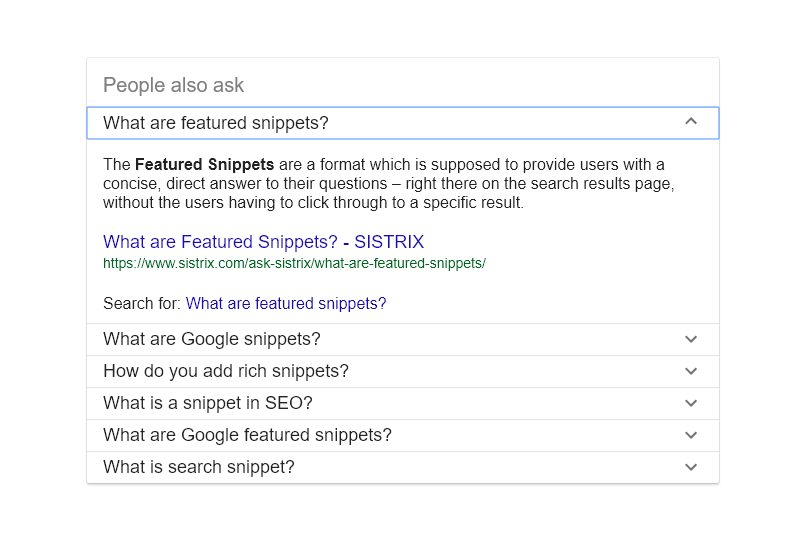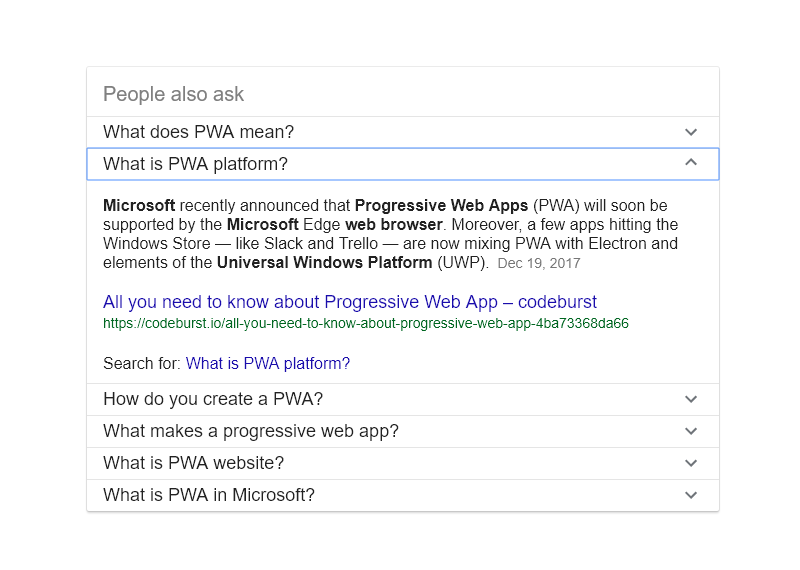The best blog post is the one that will be read
This is the second article about how to increase visitors to your blog posts (you can read the first part here). This time I am focusing on page structure updates you can make to increase organic traffic to your website.
There are many ways to get your business more visible on search engines, the place where people are often actively looking for you and ready to engage with what you offer. This post covers a simple content planning and formatting change that could increase your chances of popping up in those answer boxes you see on Google.
What is a Google Answer Box?

The accordion type boxes popping up on Google are called ‘featured snippets’ and they aim to answer your question as quickly as possible, directly on the search result page, with excerpts from the top 10 ranking websites. With these boxes taking up more space on the coveted first page of Google, you can get ahead of your competitors by tweaking content to get into this cool spot.
You’ll need to be already positioned in the top 10 search results as this is where these snippets are being extracted from. You’ll need to know already the popular topics and questions that people are looking for, and then answer them in your blog post. These content formats are great for answering user questions you found during your Google Trends and Google Suggested Searches checks (read about that here). Useful and relevant content is what you’re aiming for and Google’s ‘People also ask’ feature is giving you a heads up on what common questions might be for your particular topic. You’ll also need to include some simple formatting on the page.
Here are two examples of popular featured snippet results at the moment, the ‘paragraph’ and the ‘list’.
How to get onto a paragraph featured snippet
To feature in a ‘paragraph’ SERP feature result, the content on your page needs to be formatted with a combination of H2 subheadings and HTML paragraph tags, as in this example below. You can do this formatting in your content management system (CMS) and don’t need a technical person to help you. If your content is already relevant then this is simply a content formatting task.
<h2>Progressive web apps vs native</h2> <p>Progressive web apps are different from the native mobile apps that we're familiar with. PWAs leverage the capabilities and accessibility of the web within the well-known app shell. And the progressive technology even means that browser choice won't affect a user's ability to experience a PWA.</p> <h2>What Is A Progressive Web App?</h2> <p>Progressive Web Apps (PWAs) are web applications that are regular web pages or websites, but can appear to the user like traditional applications or native mobile applications. The application type attempts to combine features offered by most modern browsers with the benefits of a mobile experience.</p>
How to format your content for a featured snippet list
To feature in a ‘list’ SERP feature result, the content on your page should be formatted with a combination of H2 subheadings and html list tags, as in this example below. This is really easy to do in your content management system and doesn’t need any developer input.
<h2>The Benefits of Progressive Web Apps</h2> <p>PWAs aren’t just a worthwhile endeavor because it’s something new. These web-based apps hold a ton of potential. Some of these advantages hold key-value over native apps and remedy some of the issues that these traditional app experiences face. The benefits of progressive web apps are:</p> <ul> <li>Progressive and responsive design adapts to different browser choices and fits any screen, whether its a smartphone, tablet or desktop</li> <li>Accessible and shareable through a URL link, so there’s no download necessary</li> <li>Fast loading and don’t require users to update to see the latest content or features continuously</li> <li>HTTPS security protocols protect users from malicious tactics from hackers and other unscrupulous cyber attackers</li> <li>Rich with similar characteristics, navigation and functionality of native apps</li> <li>Unhindered by the standards and intervention of a middleman app store</li> <li>Consistently engaging through push notifications</li> <li>Easier to develop and bring to market, which helps reduce costs</li> </ul>
Let us know how you get on with creating and updating your blog content for search engines and the humans using them. If you need help with increasing or measuring leads to your website then get in touch.
And if you found this article useful, be a mate and forward this link onto your content teams, and anyone you know who writes blog posts for their business.
Have fun!



